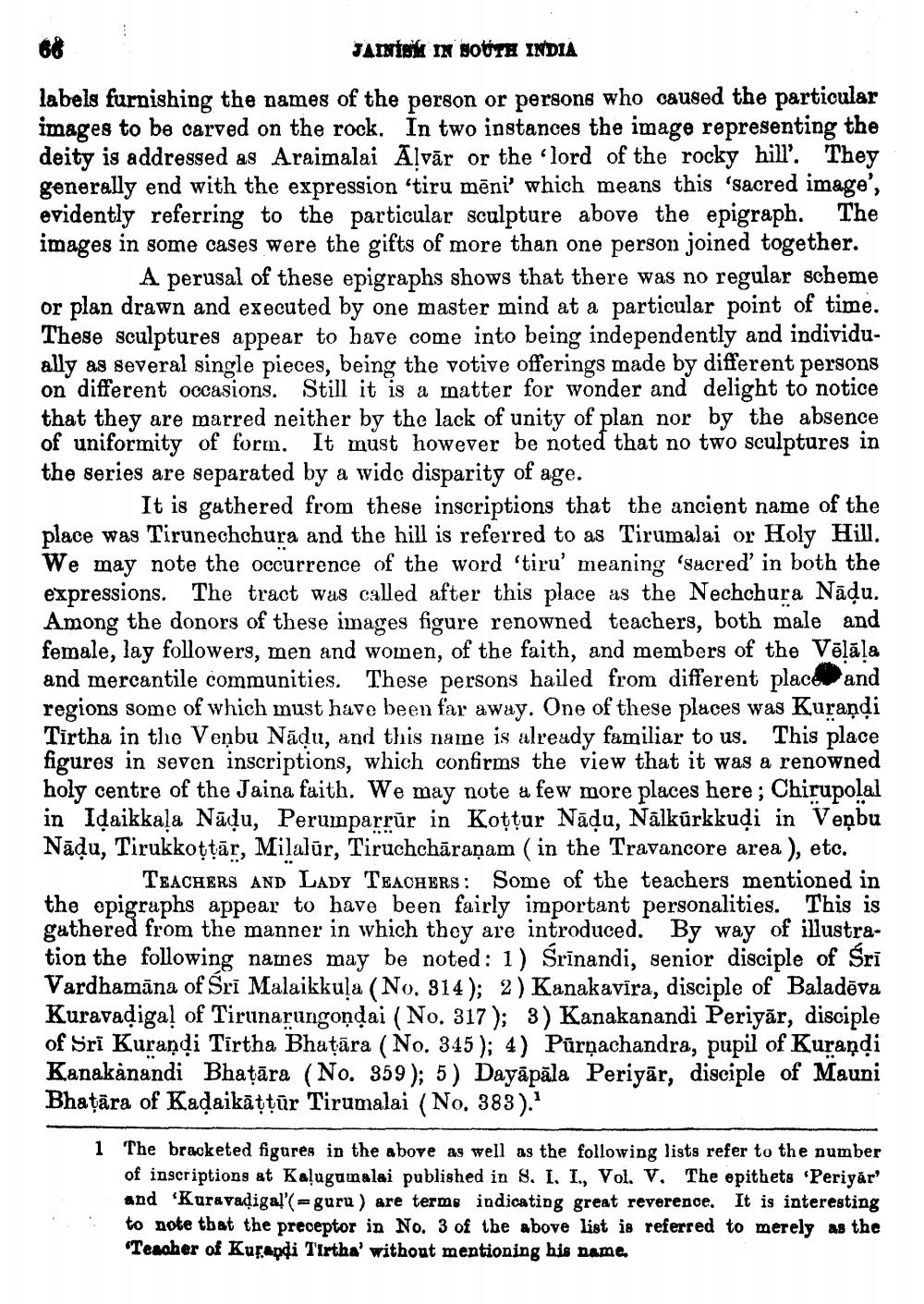________________
68
JAINISK IN SOUTH INDIA
labels furnishing the names of the person or persons who caused the particular images to be carved on the rock. In two instances the image representing the deity is addressed as Araimalai Aļvār or the lord of the rocky hill. They generally end with the expression “tiru mēni' which means this 'sacred image', evidently referring to the particular sculpture above the epigraph. The images in some cases were the gifts of more than one person joined together.
A perusal of these epigraphs shows that there was no regular scheme or plan drawn and executed by one master mind at a particular point of time. These sculptures appear to have come into being independently and individually as several single pieces, being the votive offerings made by different persons on different occasions. Still it is a matter for wonder and delight to notice that they are marred neither by the lack of unity of plan nor by the absence of uniformity of form. It must however be noted that no two sculptures in the series are separated by a wide disparity of age.
It is gathered from these inscriptions that the ancient name of the place was Tirunechchura and the hill is referred to as Tirumalai or Holy Hill. We may note the occurrence of the word 'tiru' meaning 'sacred in both the expressions. The tract was called after this place as the Nechchura Nādu. Among the donors of these images figure renowned teachers, both male and female, lay followers, men and women, of the faith, and members of the Vēlāla and mercantile communities. These persons hailed from different place and regions some of which must have been far away. One of these places was Kurandi Tīrtha in the Veņbu Nādu, and this name is already familiar to us. This place figures in seven inscriptions, which confirms the view that it was a renowned holy centre of the Jaina faith. We may note a few more places here; Chirupolal in Idaikkala Nāļu, Perumparrūr in Kottur Nādu, Nälkūrkkuļi in Veņbu Nāļu, Tirukkottār, Milalūr, Tiruchchāraṇam (in the Travancore area), etc.
TEACHERS AND LADY TEACHERS: Some of the teachers mentioned in the epigraphs appear to have been fairly important personalities. This is gathered from the manner in which they are introduced. By way of illustration the following names may be noted: 1) Śrīnandi, senior disciple of Sri Vardhamāna of Sri Malaikkuļa (No. 314); 2) Kanakavīra, disciple of Baladēva Kuravadigal of Tirunarungondai (No. 317 ); 3) Kanakanandi Periyar, disciple of Sri Kuraņdi Tirtha Bhațāra (No. 345 ); 4) Pūrņachandra, pupil of Kurandi Kanakànandi Bhațāra (No. 359); 5) Dayāpāla Periyār, disciple of Mauni Bhatāra of Kadaikāịtūr Tirumalai (No. 383).
1 The bracketed figures in the above as well as the following lists refer to the number
of inscriptions at Kalugamalai published in 8. I. I., Vol. V, The epithets Periyar' and 'Kuravadiga!'(= guru ) are terms indicating great reverence. It is interesting to note that the preceptor in No. 3 of the above list is referred to merely as the Teacher of Kurapdi Tirtha' without mentioning his name.




